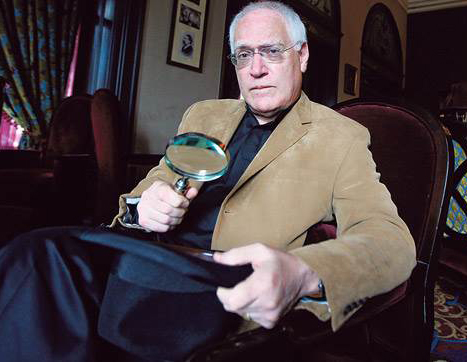
The New Annotated Strange Case of Dr. Jekyll and Mr. Hyde
Dr. Jekyll is a character who wanted to delve deeper into dormant aspects of his persona. How appropriate then that Leslie S. Klinger in The New Annotated Strange Case of Dr. Jekyll and Mr. Hyde chose to burrow deep into the narrative and expose detailed layers of information regarding the man-men. And in the process, reveal quite a bit about the story’s author Robert Louis Stevenson. Indeed Klinger, an editor-annotator par excellence, has produced a cornucopia of insights about Jekyll and Hyde including adaptations to stage, screen, and graphic novels.
Reading Stevenson’s novel with the annotations and copious illustrations enhanced my appreciation for the work. I found myself being drawn in by passages and descriptions in ways different from previous readings. For example, a Klinger footnote pointed out that in the section “Henry Jekyll’s Full Statement of the Case,” the points of view constantly shift from first to third-person “as well as the self-referential pronouns in the next few paragraphs. Jekyll switches back and forth between calling Hyde ‘he’ and ‘I’—Jekyll still refuses to admit that they are one person.”

Along with Joe Hill in his excellent introduction, Klinger also posits an analogy comparing the Victorian mindset and cultural mores with the narrative. Dichotomies abounded in the era, and hypocrisy ran rampant. Hill sums it up thus: “The Victorian era had a divided personality. On the one hand, the children of Empire celebrated industry and scientific discovery; on the other, they were fixated upon the occult and madness and death.” He goes on to discuss how fiction writers of the period expressed that discrepancy, putting the hypocritical moral code and closeted behavior of the time under the literary microscope. Hill concludes that: “But where Stevenson’s contemporaries explored specific tensions within the Victorian psyche, Jekyll and Hyde captures the heart of it, and pinned the split personality of the era to the page.”
Henry Jekyll, like many gents of the time, engaged in sexual tourism. Opium dens, prostitutes, and other forbidden fruits available for partaking were regularly covertly sampled. Jekyll ruminated about the need for subterfuge: “Hence it came about that I concealed my pleasures; and that when I reached years of reflection and began to look round me and take stock of my progress and position in the world, I stood already committed to a profound duplicity of life.” In other words, Hyde was omnipresent and waiting to come out of the closet.
Out of the closet is an apt phrase to employ, since it is implied in the narrative that those who have seen Mr. Hyde entering and/or exiting Jekyll’s abode suspect that the two men were engaged in homosexual activity. That would explain Jekyll’s secretive behavior, since the culture tolerated a certain degree of sexual peccadillos amongst the upper classes, but homosexuality was viewed harshly and severely punished. It is worth noting that unlike the subsequent stage and film versions of the story, there is no female love interest for Jekyll in Stevenson’s book. His narrative universe has the ambience of a gentleman’s club rocked by behavior that skirts the rules of the establishment.
Klinger’s attention to the pop culture permutations on the Jekyll and Hyde theme are wonderfully illustrated through a multitude of photographs depicting posters, magazines, and comics. He even provides a pronunciation of Jekyll’s name, courtesy of Stevenson himself: “By all means let the name be pronounced as ‘jee-kill’; not ‘Jek-ill.’” The appendixes feature many splendid features such as Notable Stage and Screen Productions, Notable Graphic Productions, and The Notebook Draft.
The New Annotated Strange Case of Dr. Jekyll and Mr. Hyde, published by The Mysterious Press, is chock full of goodies. It also puts Robert Louis Stevenson’s tale into historical perspective while providing psychological astuteness into the complexity of personality disorders. A grand book, on many levels.

